
| Twig Looper or Common Bark Moth (one synonym is : Tephrosia exportaria Guenée, 1857) BOARMIINI, ENNOMINAE, GEOMETRIDAE, GEOMETROIDEA | (donherbisonevans@yahoo.com) and Stella Crossley |
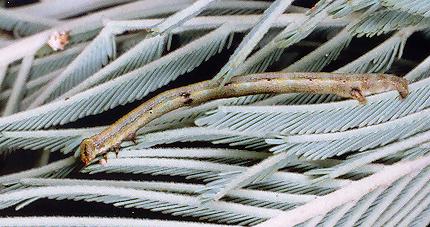
early instar, magnified
(Photo: courtesy of Cathy Byrne)

| Twig Looper or Common Bark Moth (one synonym is : Tephrosia exportaria Guenée, 1857) BOARMIINI, ENNOMINAE, GEOMETRIDAE, GEOMETROIDEA | (donherbisonevans@yahoo.com) and Stella Crossley |

early instar, magnified
(Photo: courtesy of Cathy Byrne)
These caterpillars are loopers come in a range of colours, from greenish grey through brown to red. Early instars have a dark mark about half way along each side, on the second abdominal somite. Later this becomes black and white.
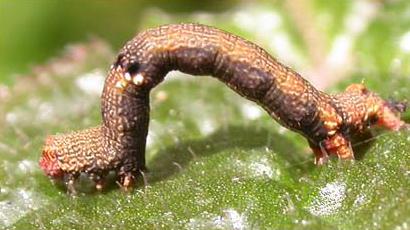
Final instars may lose these marks and may develop other marks or have no marks at all. They develop a small pair of dark or reddish dorsal horns at the rear.
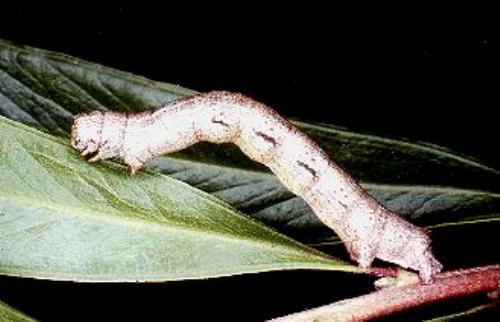
The caterpillars rest characteristically sitting on their last pairs of legs, with their other true legs folded into the body. The caterpillars lay a silken thread wherever they travel, and if harassed, will drop down on the thread until danger passes, then they laboriously climb back up it.
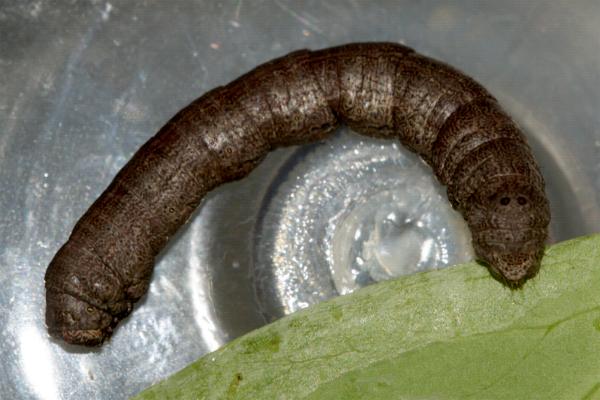
The caterpillars have been found feeding on a wide variety of plants, including the exotic plants:
as well as the Australian native plants:
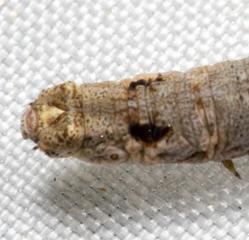
The caterpillars grow to a length of about 4 cms.
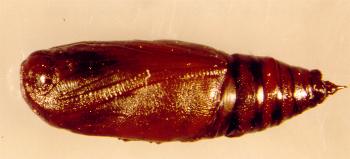
Pupation occurs in a soil cell, and in summer the adult moth emerges about two weeks later.
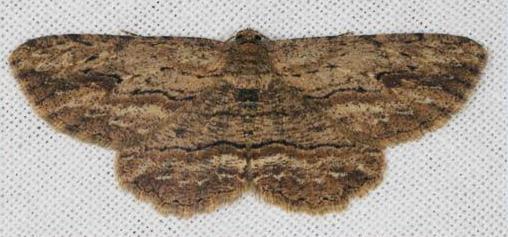
The adult is grey to light brown, with a wavy lines of various shades of grey and brown. Like most Ectropis species, it has a blurry dark blotch near the middle of each forewing, and dark marks on the first abdominal segment. which align with double wavy dark lines on the wings when the moth is at rest.
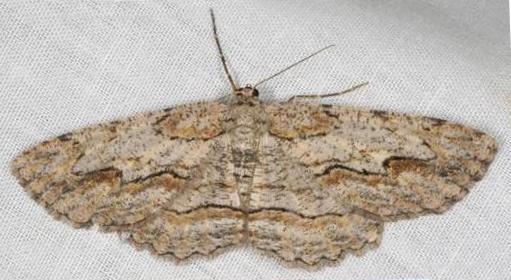
The undersides are pale brown with a small brown spot in the centre of each wing. Like most geometrids, the moth rests with wings outspread. The adults blend in well with the bark of many trees. However, the moths show little preference for resting on such material, and are frequently found on plain walls and window-sills! The wingspan is about 3 cms.
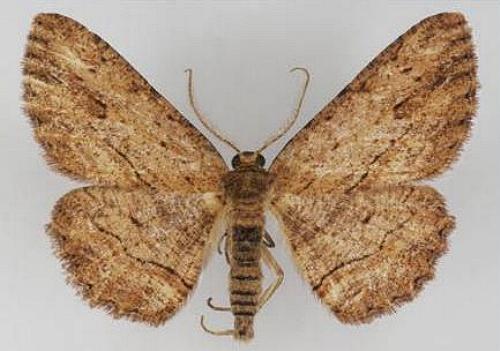
The antennae is threadlike on the female, and the male has pectinations about twice the width of the filament. This is different from Ectropis bispinaria, the male of which has shorter pectinations. But the male Ectropis excursaria may fold the pectinations at times, so merely giving the antennae a thickened appearance.
The adult Ectropis excursaria moth has a large kink in the forewing central black transverse line by the central dark mark, which is similar to that of Ectropis bispinaria, but Ectropis excursaria differs in having a dark curved submarginal line on each hindwing that is incomplete or stepped at the costal end.
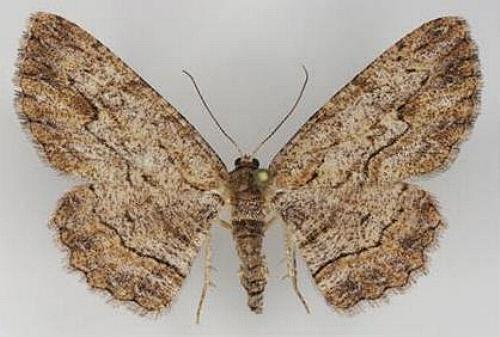
The eggs are laid in untidy clusters, and are pale green, oval, and covered in microscopic dimples.
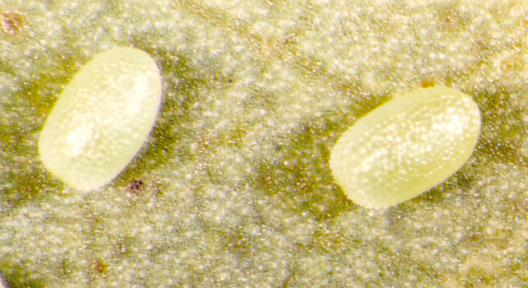
The species occurs all over Australia, including
The moths and caterpillars are found throughout the year in suburban gardens of Sydney and Melbourne.
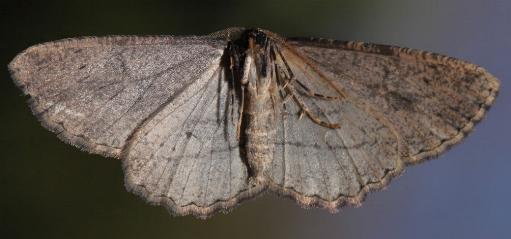
Further reading :
Ian F.B. Common,
Moths of Australia,
Melbourne University Press, 1990, fig. 36.2, pp. 67, 367.
Achille Guenée,
Uranides et Phalénites,
in Boisduval & Guenée: Histoire naturelle des insectes; spécies général des lépidoptères,
Volume 9, Part 9 (1857), pp. 267-268, No. 416.
Marilyn Hewish,
Moths of Victoria: Part 7,
Bark Moths and Allies - GEOMETROIDEA (D),
Entomological Society of Victoria, 2016, pp. 30-31.
Peter B. McQuillan, Jan A. Forrest, David Keane, & Roger Grund,
Caterpillars, moths, and their plants of Southern Australia,
Butterfly Conservation South Australia Inc., Adelaide (2019), p. 117.
 caterpillar |  butterflies |  Lepidoptera |  moths |  caterpillar |
(updated 16 September 2013, 12 May 2025)